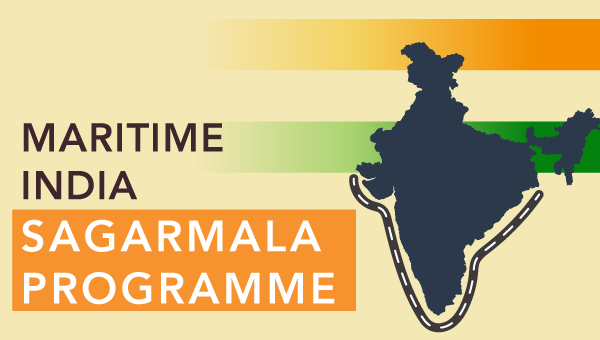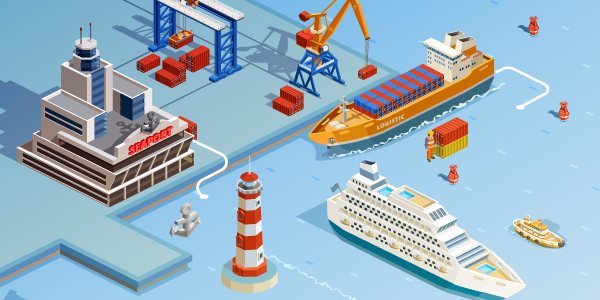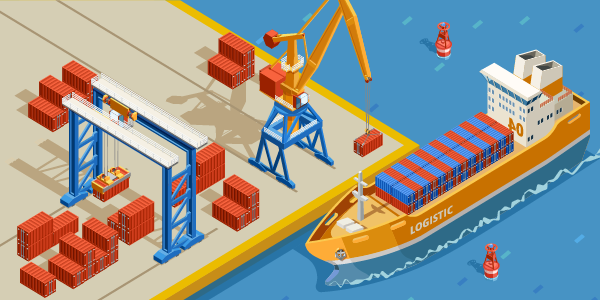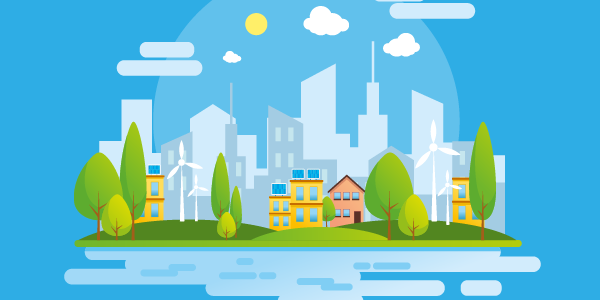Maritime India- Sagarmala Programme
India’s maritime sector has been a mainstay of the country’s trade and has grown manifold over the years. The 7,500 km long coastline, 14,500 km of potentially navigable waterways and India’s strategic location on key international maritime trade routes have been particularly advantageous for trade & commerce.1
The ambitious Sagarmala Programme aims to promote port-led development in the country, with the goal of reducing logistics costs for EXIM and domestic trade.1
The Sagarmala Programme was approved by the Union Cabinet in March 2015. As of March 2020, approximately 500 projects with a total investment value of USD 47.33 Bn have been identified. Of these, 143 projects worth USD 11.73 Bn has been completed, and the remaining 357 projects are under various stages of implementation and development.1
Source 1

Under the Sagarmala Programme, a roadmap has been prepared to increase India’s overall port capacity to more than 3300 Mn metric tonnes per annum (MMTPA), in order to cater to the projected traffic of 2500 MMTPA by 2025.1
Under Project Unnati, global benchmarks have been adopted to improve the efficacy and productivity of 12 major ports. Around 116 initiatives have been identified across the 12 ports to unlock more than 100 MTPA capacity just by improving efficiency. Of these, 93 initiatives have been implemented to unlock ~80 MTPA capacity.1
In addition to the projects aimed at capacity expansion of major ports, 2 new port locations – Vadhavan (Maharashtra) and Paradip Outer Harbour (Odisha)- have been identified to increase overall cargo handling capacity.1
Source: 1

Sagarmala Programme aims to provide enhanced connectivity between the ports and the domestic production& consumption centres.1
To boost the maritime industry by ensuring end-to-end connectivity, ~235 projects, with investments worth USD 31.33 Bn, have been identified.1
Major project types include:1
- National waterways prioritized for development in the phase-I
- Connectivity to dedicated freight corridors
- Last-mile rail and road connectivity projects
- Major rail connectivity projects
- Freight friendly expressway projects connecting major ports
- Development of multi-modal logistics parks
- POL pipeline
Source 1

To induce port-led industrialization, Coastal Economic Zones (CEZs), Coastal Economic Units (CEUs), Port-Linked Industrial & Maritime Clusters and Smart Industrial Port Cities (SIPCs) have been introduced.1
14 CEZs covering major maritime states have been planned under the Sagarmala Programme.1
30 potential port-linked industrial clusters across energy & discrete manufacturing sectors have been identified with a proposed investment cost of USD 27.78 Bn.1
Projects under development include SEZ at JNPT, SIPC at Paradip & Kandla and CEUs at VOCPT (Tuticorin) & KPL (Ennore).1
Source 1

The Cabotage Rule under Section 406 of the Merchant Shipping Act 1958 has reduced restrictions on the licencing requirements for ships chartered by Indian entities to permit coastal movement of agricultural, horticultural, & fishery products, animal produce commodities and fertilizers.1
Ministry of Shipping (MoS) in India has undertaken a skill gap analysis for the coastal community across 21 districts. Nearly 1978 people have been trained and 1143 have already secured jobs.2
In order to improve the livelihoods of fishermen, MoS is also part-funding select fishing harbour projects in collaboration with the Department of Animal Husbandry, Dairying and Fisheries (DADF).2
To ensure the availability of skilled manpower in maritime and shipbuilding sectors, a Centre of Excellence in Maritime and Shipbuilding (CEMS) has been set up with campuses at Vizag and Mumbai.2
Further, the National Technology Centre for Ports, Waterways and Coasts (NTCPWC) is being set up at IIT Madras, Chennai - to provide innovative and research-based engineering solutions for various issues related to ports, waterways and coasts in the country. 2
